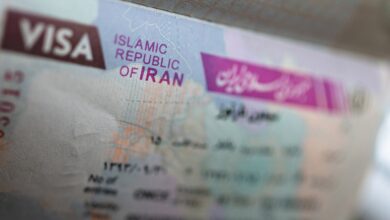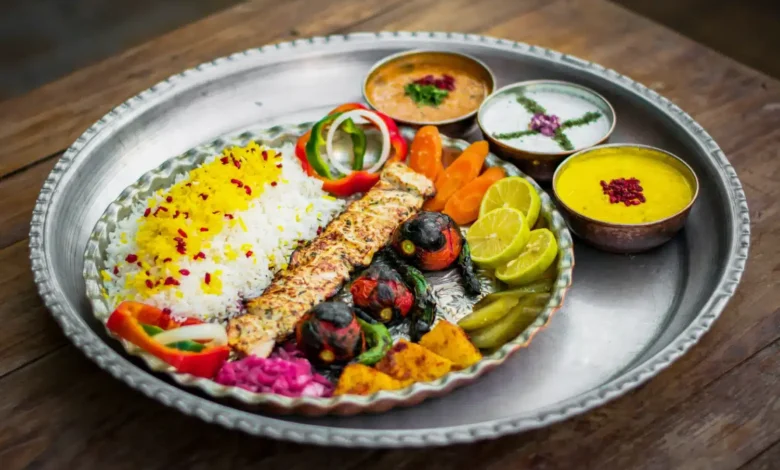
Iranian cuisine is a reflection of a culture with thousands of years of history. Packed with bold Persian flavors and deep-rooted traditions, its culinary heritage tells the story of an ancient land where influences from past empires meet modern creativity. The result? A gastronomic experience that excites both the palate and the imagination.
Let’s be honest—when planning a trip, many of us dream about the local food as much as the historical sites and scenic landscapes. Sure, discovering cultural landmarks and breathtaking nature is exciting, but tasting new flavors is often the highlight of any journey. Whether we admit it or not, we’re all culinary tourists at heart.
And if you’re an adventurous foodie, Iranian cuisine promises to be an unforgettable flavor journey. From the sweet aromas of saffron-infused desserts to the comforting warmth of slow-cooked stews, every dish tells a story. Get ready to discover the key ingredients of Persian cooking and the irresistible flavors that make Iran a must-visit for every food lover.
So, are you ready to awaken your taste buds and indulge in the rich flavors of Iran? Let’s dive into the essential Persian ingredients, the unique dishes they create, and why Iranian cuisine is a feast you won’t want to miss.
Contents
Saffron
Saffron, native to present day Iran, the world’s most expensive spice at 15k a kilogram, and unique in taste, color, and smell, is notorious for a golden yellow and appetizing glow it gives food, an intoxicating smell that gets you hooked, and a one-of-a-kind taste it adds to any dish, whether it’s the top, middle, or base flavor.
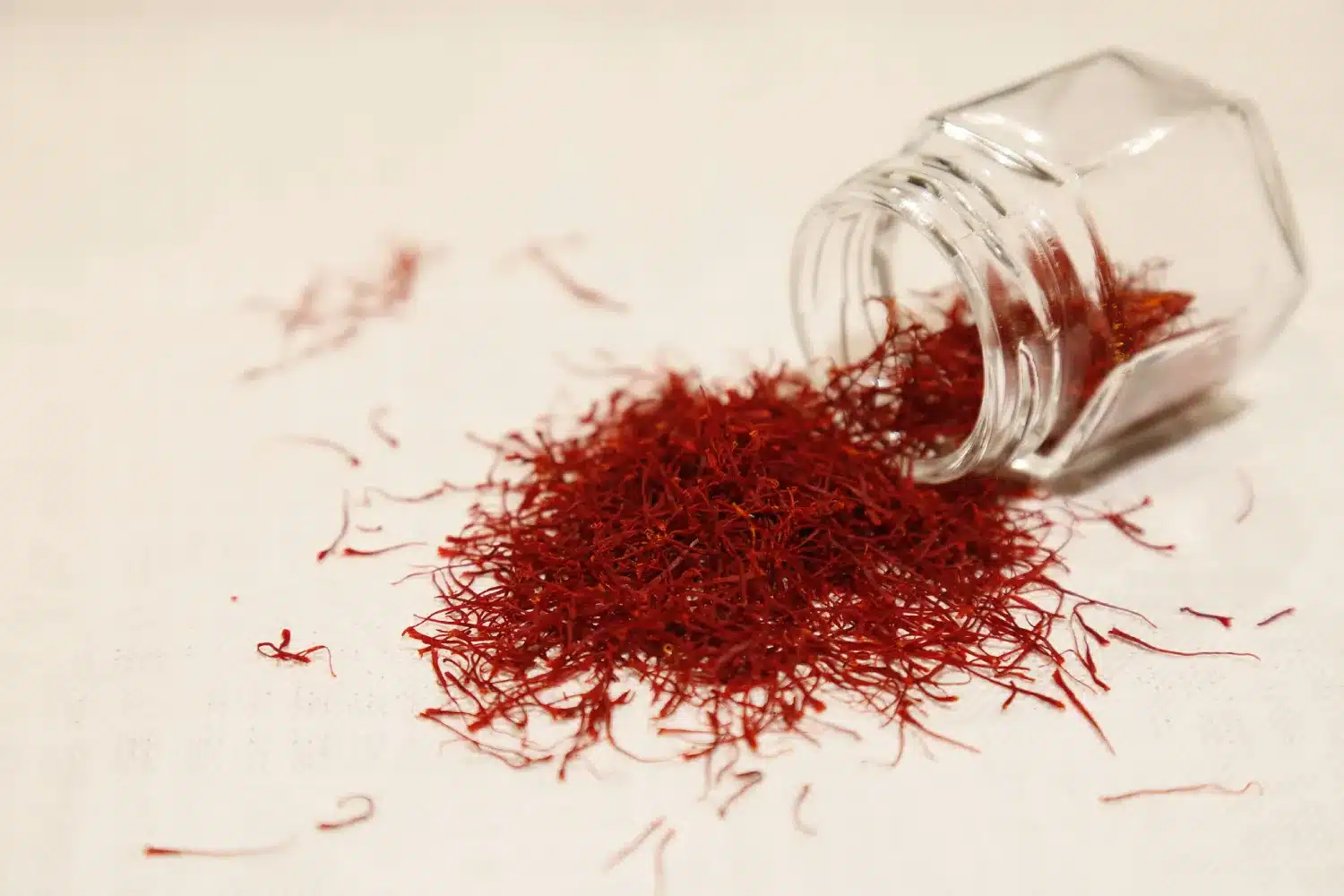
You definitely won’t want to miss out on tasting some of the dishes made with saffron, so make sure you ask for the following dishes when trying out Iranian cuisine, or your culinary journey through Persian cuisine will simply have been a dud.
Iranian food is not just about taste; it’s a celebration of heritage and culture that every foodie must experience.
Zereshk Polo
‘Zereshk’ is Persian for dried barberry and ‘polo’ for cooked rice, making ‘zereshkpolo’ barberry rice, which has saffron in three of its elements: in the bottom crust of the rice, in the stir-fried barberry mixed with the rice in the platter, and in the boiled chicken it is served with.
Love-bombing you from top, middle and bottom, Zereshkpolo is one of the prominent dishes that showcases how much of a delicacy saffron is, and is highly likely to make the list of your favorite exotic foods.
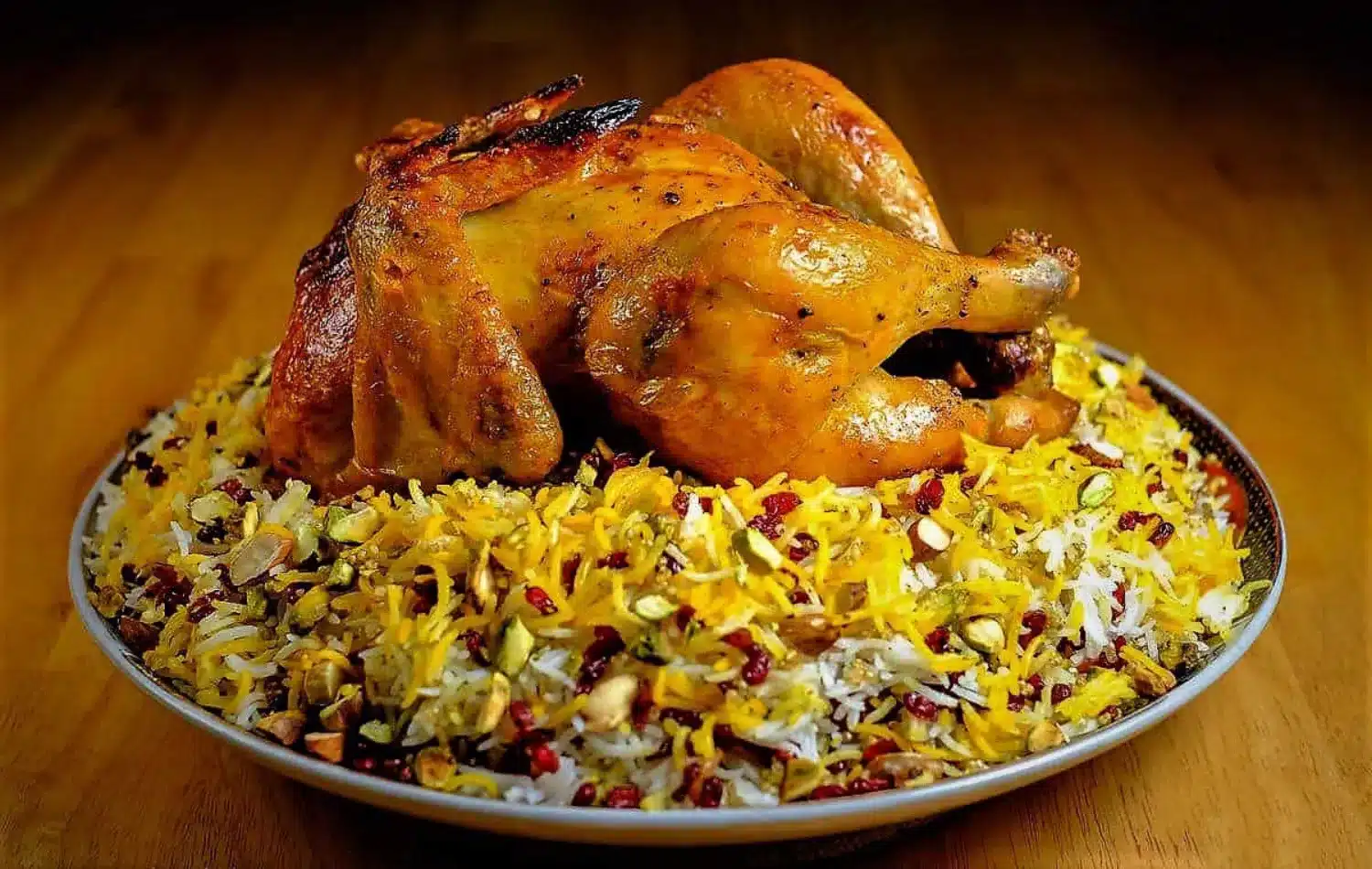
Jooje Kebob Saferooni
Chicken barbecue is a household food on pretty much a universal scale, right? Nothing special so far, but wait to get a taste of it marinated in a saffron-laced sauce, and you’ll look at chicken barbecue, or ‘Jooje Kebob’ as they are called in Iranian cuisine, with a whole new respect.
So, I’d put ‘Jooje Kebob Saferooni ‘on my list of food needed to be tested while taking my culinary journey in Persian cuisine.
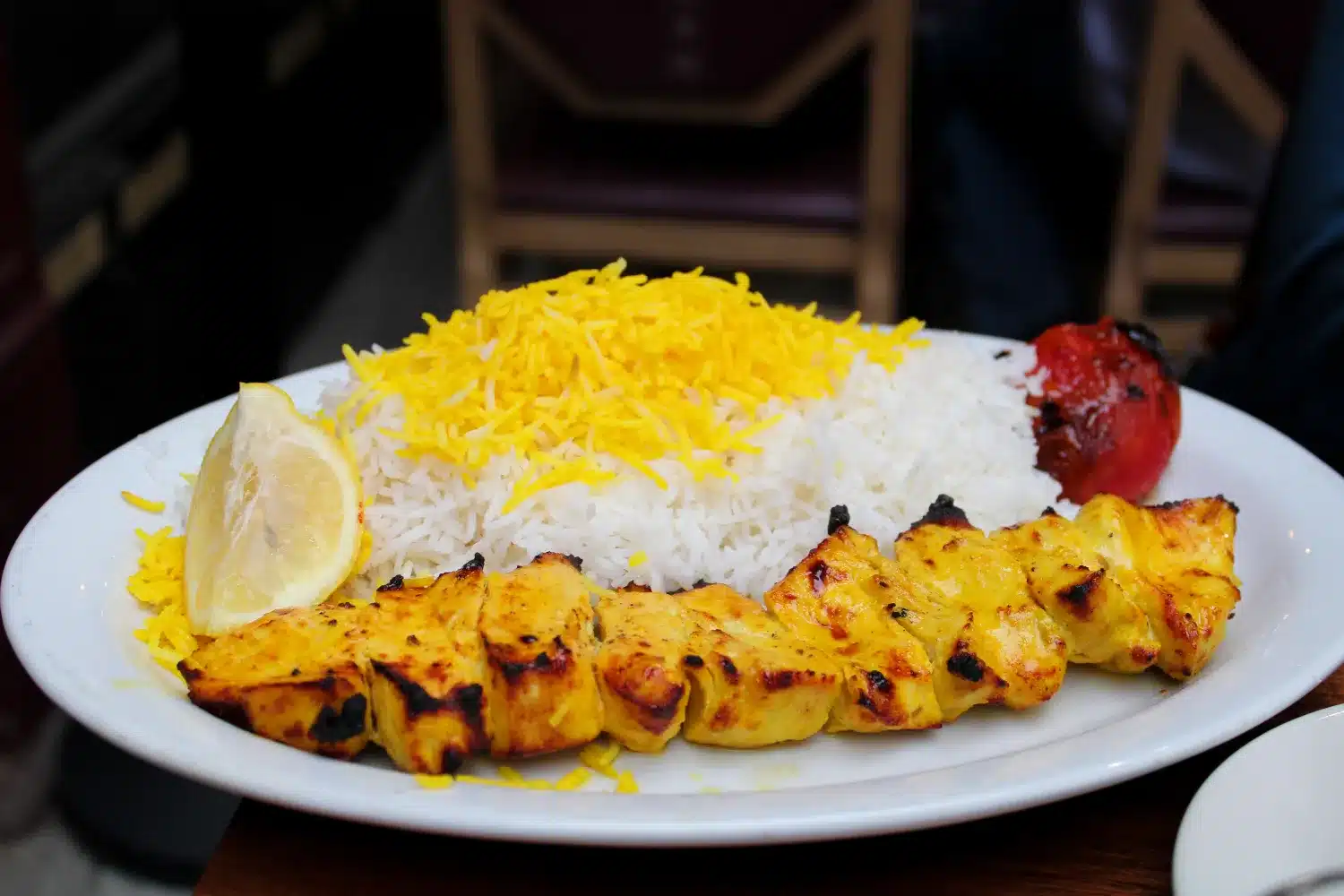
Shole Zard, Masghati, Halva
You treat your taste buds to an unforgettable savory dish like the two above, and you realize you have only raised your expectations of the desert to come after, familiar story, isn’t?
That’s when you ask your guide/chef/waiter to fetch you three different Iranian pudding containing the magical combo of saffron and rose water: some ‘Shole Zard’ (literally yellow as flames), which is basically a rice pudding tasting like saffron and rose water.
“Masghati”, which is a starch pudding dominantly flavored by the same mixture, and Halva which is a flour-based version of the golden pudding series. Odds are they’ll have you asking for a recipe and splurging on some saffron.
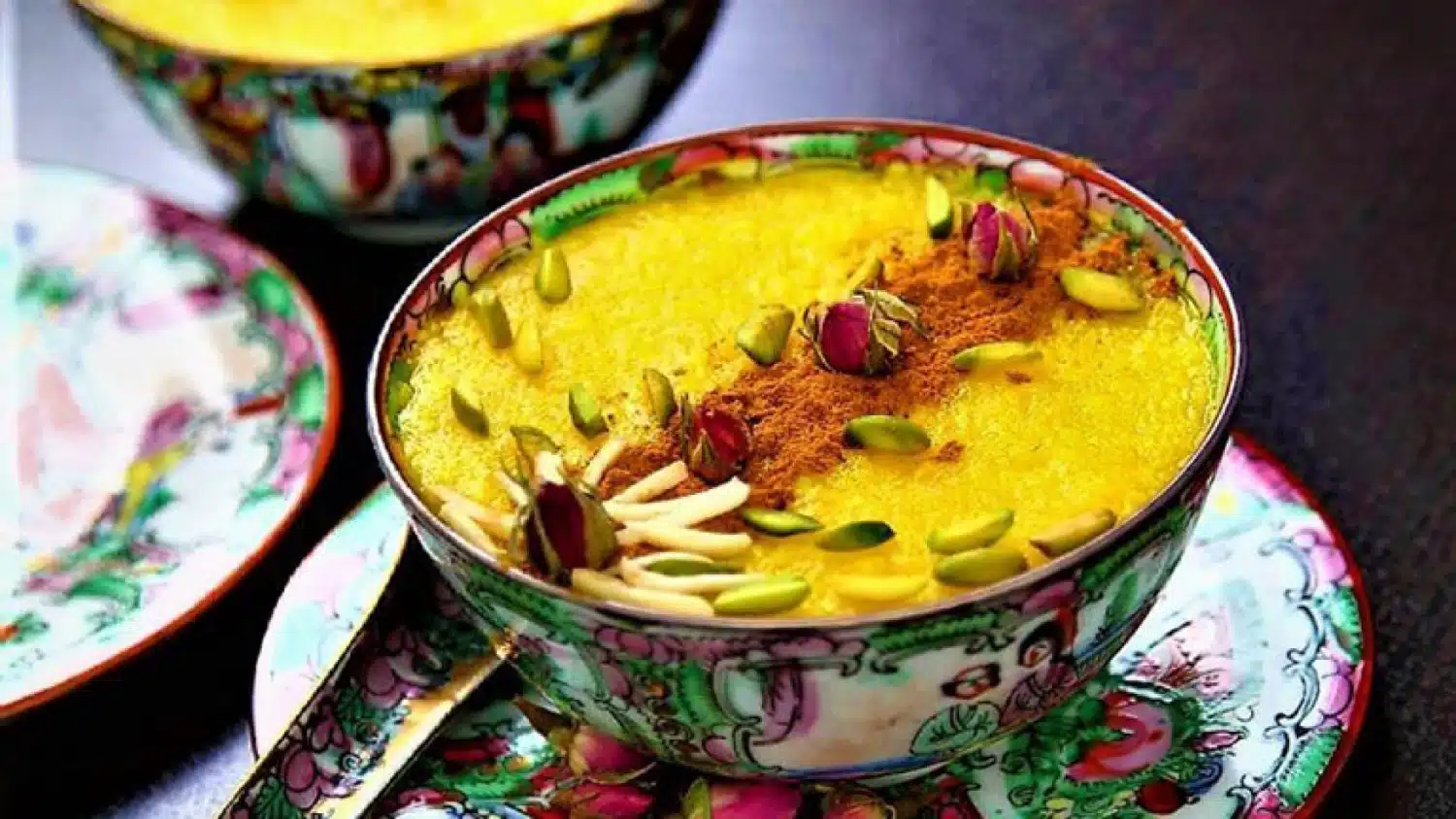
Cardamom
Cardamom which is called ‘Hel’ by the locals, surprisingly rich is protein, vitamin B and C; and having a sharp, warm, and earthily pungent flavor, is known to be among the particularly fragrant condiments, that gives a unique flavor to some Persian dishes it’s used in, making it quite sought after by the culinary tourists, which we all are, overtly or covertly. So, let’s see what part of Iranian cuisine can introduce us to this heart-stealer:
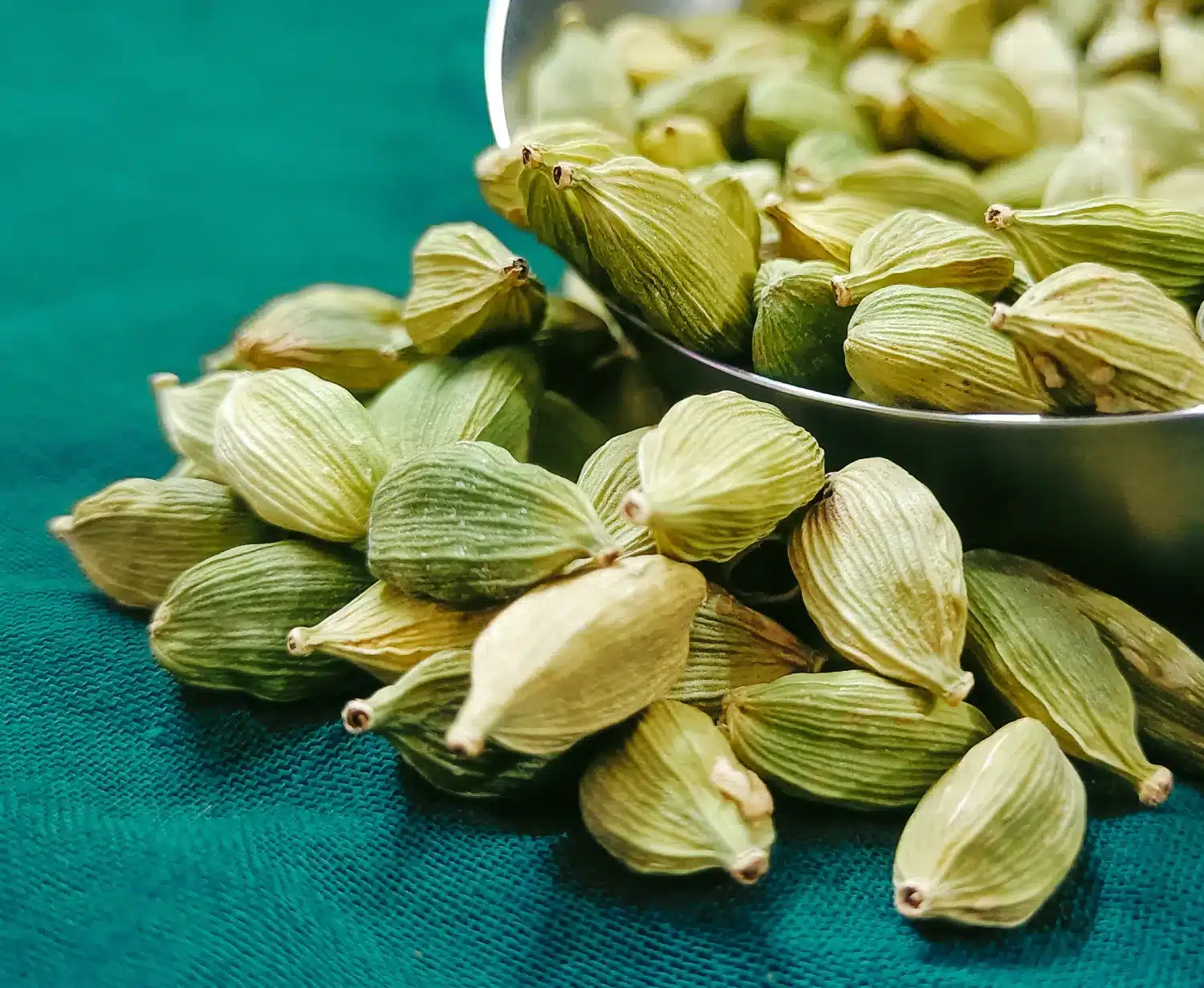
Ghottab
Let’s start with the sweet delicacies this time around, Ghottab is a pleasantly moist pastry, with the cardamom taste mildly dominating over the taste of walnut and almond.
It’s a local delicacy of Yazd, so you can find it in abundance when visiting the largest mud brick city of the world, but you may find it in some confectionaries near tourist attraction of other cities too.
I’d ask my tour guide to locate them for me, as they tend to know where the goodie are in every given county, town, or city they take you to.
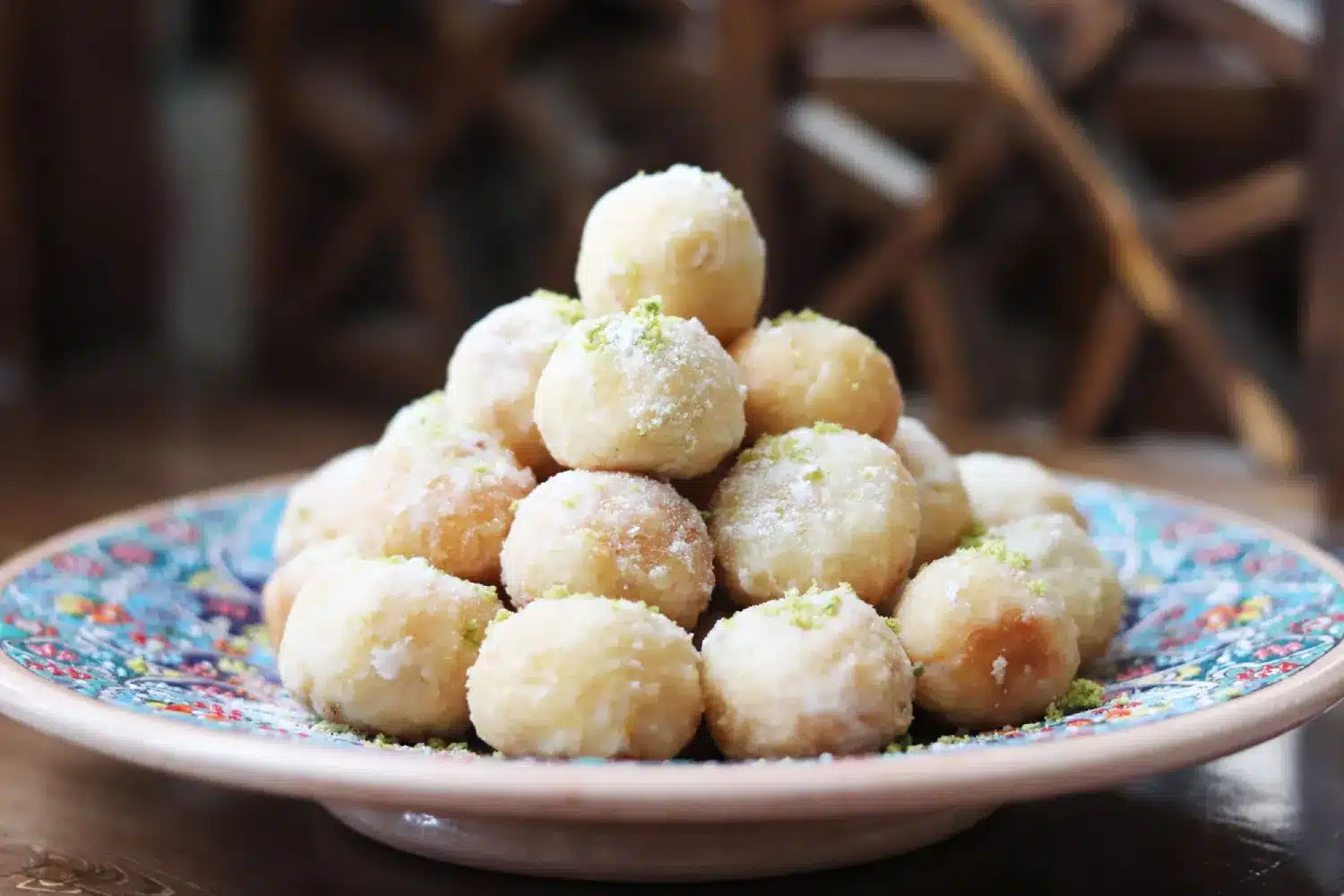
Baghlava
Baghlava, a syrupy looking, nutty-textured, and cardamom-tasting sweet treat, famous and popular among tourists and locals, is a must-try representative of Iranian cuisine and a proud token of Persian flavors.
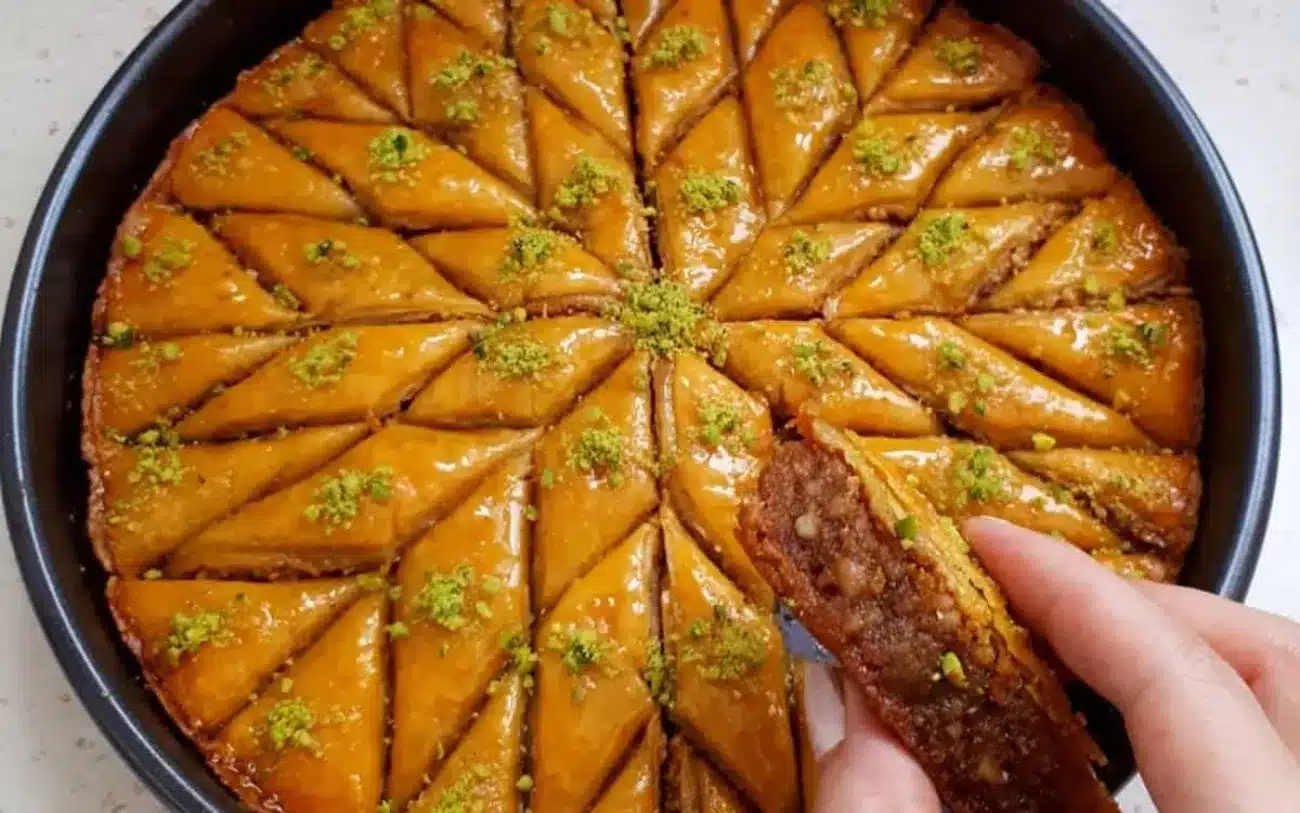
Polo Makhlut Ba Hel
So, one of the big parts of Iranian cuisine is a concept called ‘Polo Makhlut’ which is an eye-pleasingly colorful rice dish, as the rice is cooked mixed with one of a wide variety of sauces, made with different ingredients and seasonings. It’s kind of like a ballroom dance of flavors and colors in the platter of a rice dish.
Literally meaning mixed rice, one of the flavorful Iranian Polo Makhluts is called ‘Hel Polo’, which is a yellowish spicy chicken rice dish steaming with a pleasingly sharp smell and taste of cardamom. Make sure you have your host, your guide, or the Iranian food-loving friend who is showing you around the country and cook you a pot, keeping your experience with Iranian cuisine from going half-…decent.
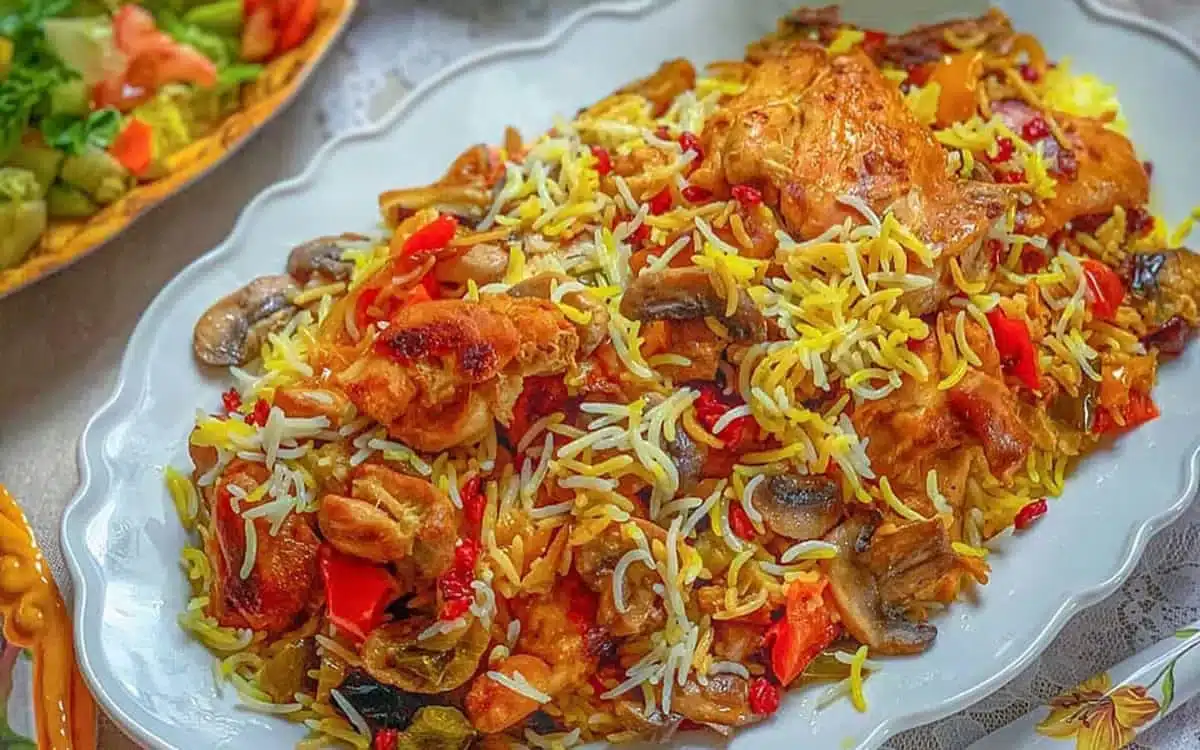
Kashk
See, there is this sour-salty drink native to Iran called ‘dough’, which is a watery yoghurt served with mint and garlic powder. Now, they dry that out through some special steps, and the flavor changes into a unique one that should be on any foodie’s bucket list. There are three dishes made with Kashk, all my personal favorites, you cannot possibly neglect to ask for, when experiencing Iranian cuisine and indulging in Persian flavors.
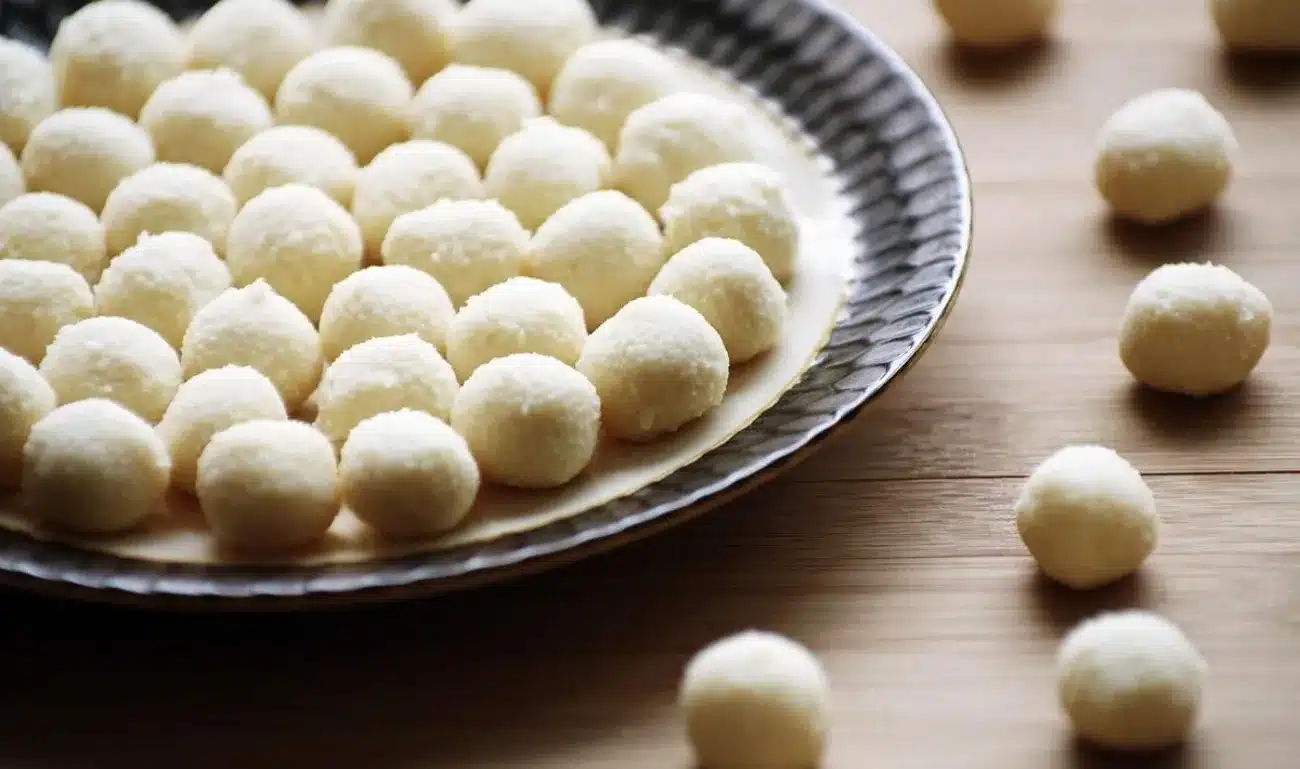
Kashke Bademjan
An eggplant dish, laced with garlic, onion, mint, and Kashk, ‘Kahske Badmejan’ has disappointed very few, and charmed many with how tasty an exotic dish it is, whether they were locals and middle-eastern or western tourists. So, let yourselves be in the charmed camp by this proud spokesperson of Iranian cuisine, and treat yourself to some of the famed ‘Kashke Bademjan’
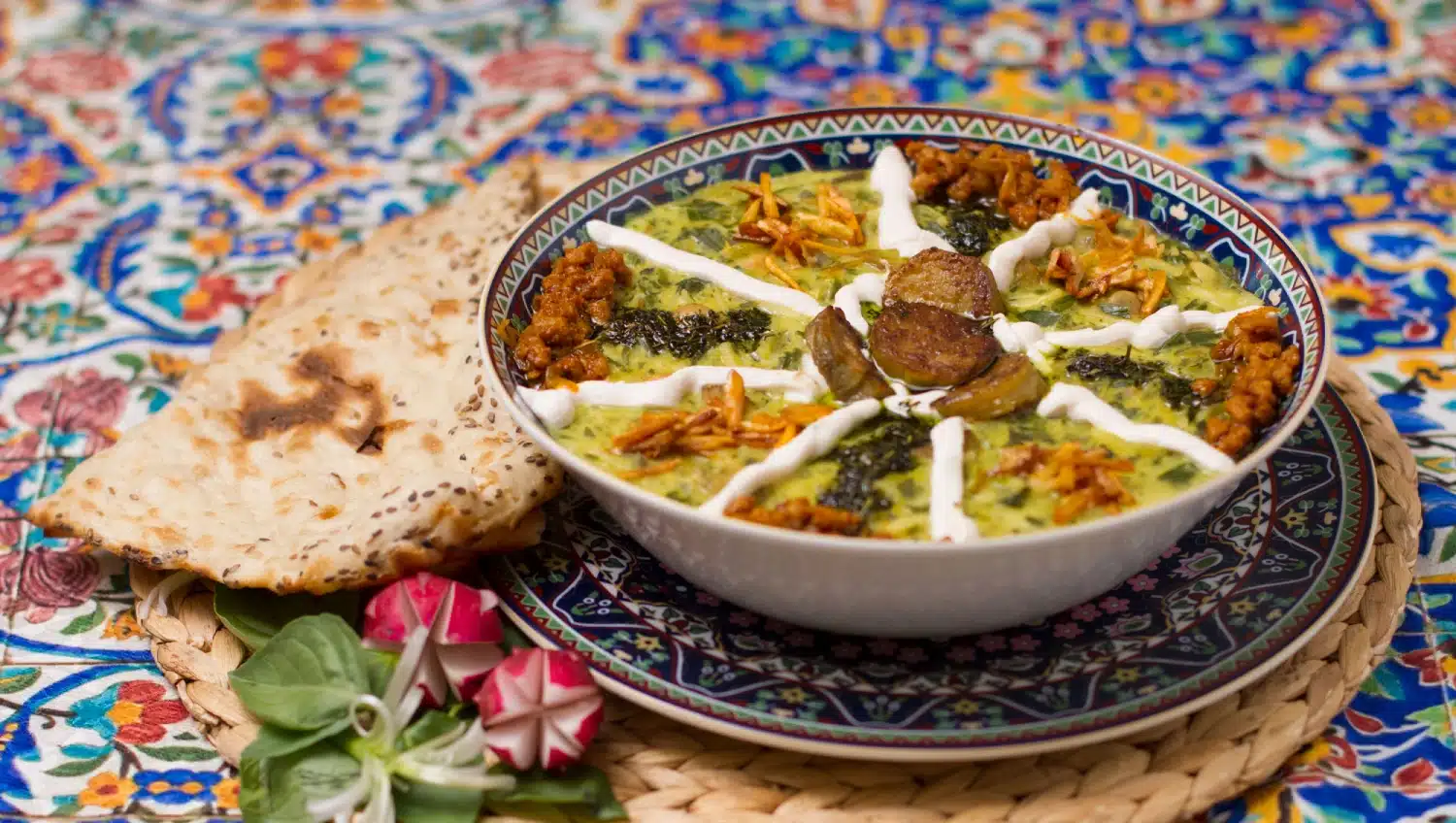
Aashe Reshte
A literal hot pot of herbs, legumes and grains, ‘Aash’ is a broth made with peas, beans, fragrant herbs, and noodles, served with fried onion, garlic, mint powder, and the ultimate clinching flavor: Kashk. ‘Aash’, quite the exciting symphony of tastes and smells, is a ubiquitous part of Iranian family get-togethers, having Kashk as a big part of why all the nieces, nephews, and grandchildren huddle around grammy, or auntie to get served Aash, at the regular family events.
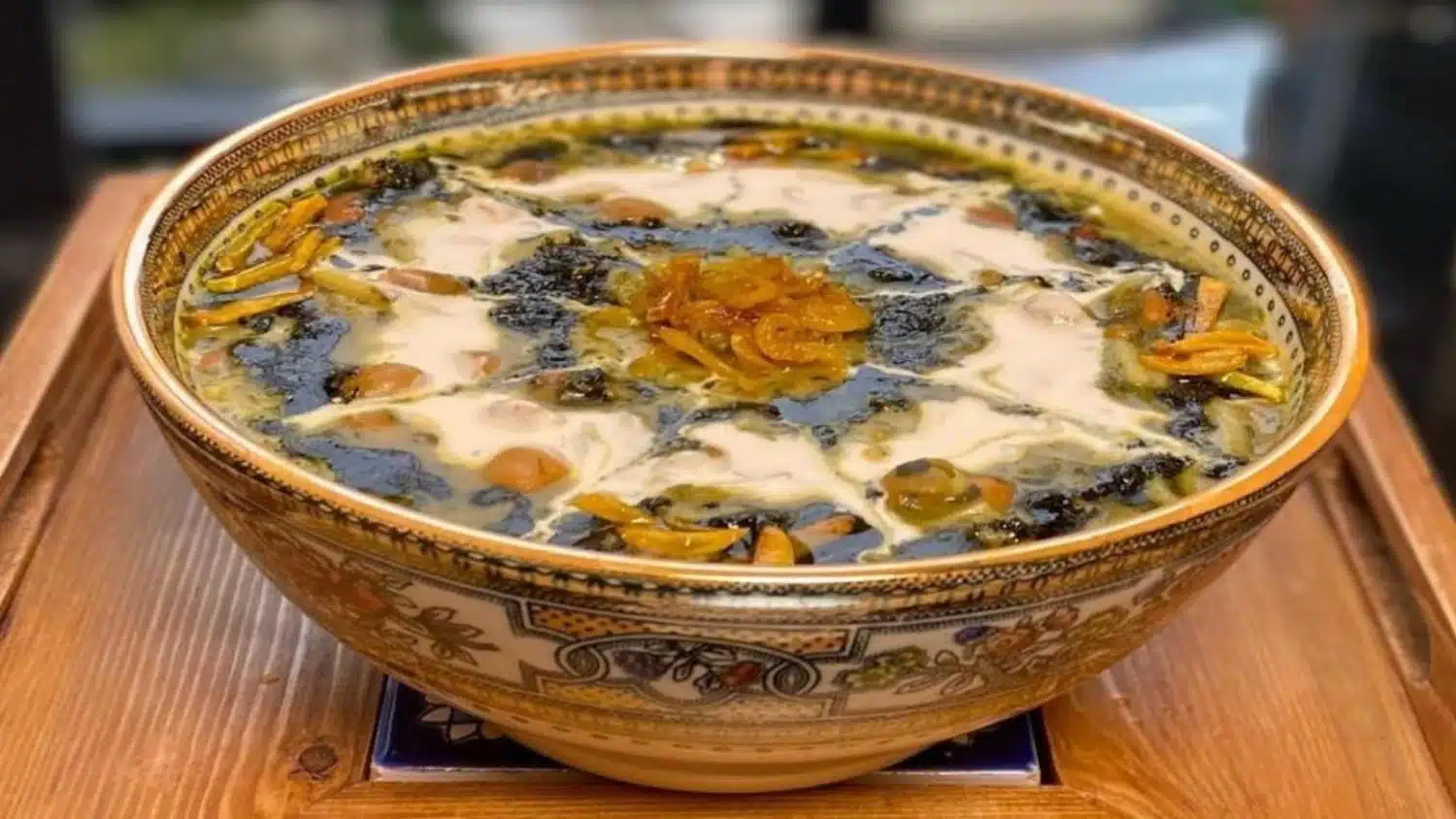
Kaal Joosh
An economical throw-together comfort dish, Kal Joosh is as delicious as it is easily made. Ground-up walnut, boiled with some onion, garlic and Kashk, with breadcrumbs mixed in to make a delectably chunky texture, sounds too simple to constitute a proper meal, but God is it what you’d crave for at least once a month, if not more often.
Iranian Cuisine, Cruising Along a Sea of Persian Flavors
Saffron, cardamom, and Kashk, the unmissable Iranian flavors making dishes like Zereshkpolo, Ghottab, and Kashke Bademjan as great tasting as they are, are only three of what you need to try when travelling in Iran. There is a much longer list containing delicacies like Robe Anar, Dallar, and cumin.
Ask for a complete list, and try to find yourself a zealous Iranian foodie, to help you try as many as possible, so you can have the full adventure with Iranian cuisine, and the ultimate journey through Persian flavors.
